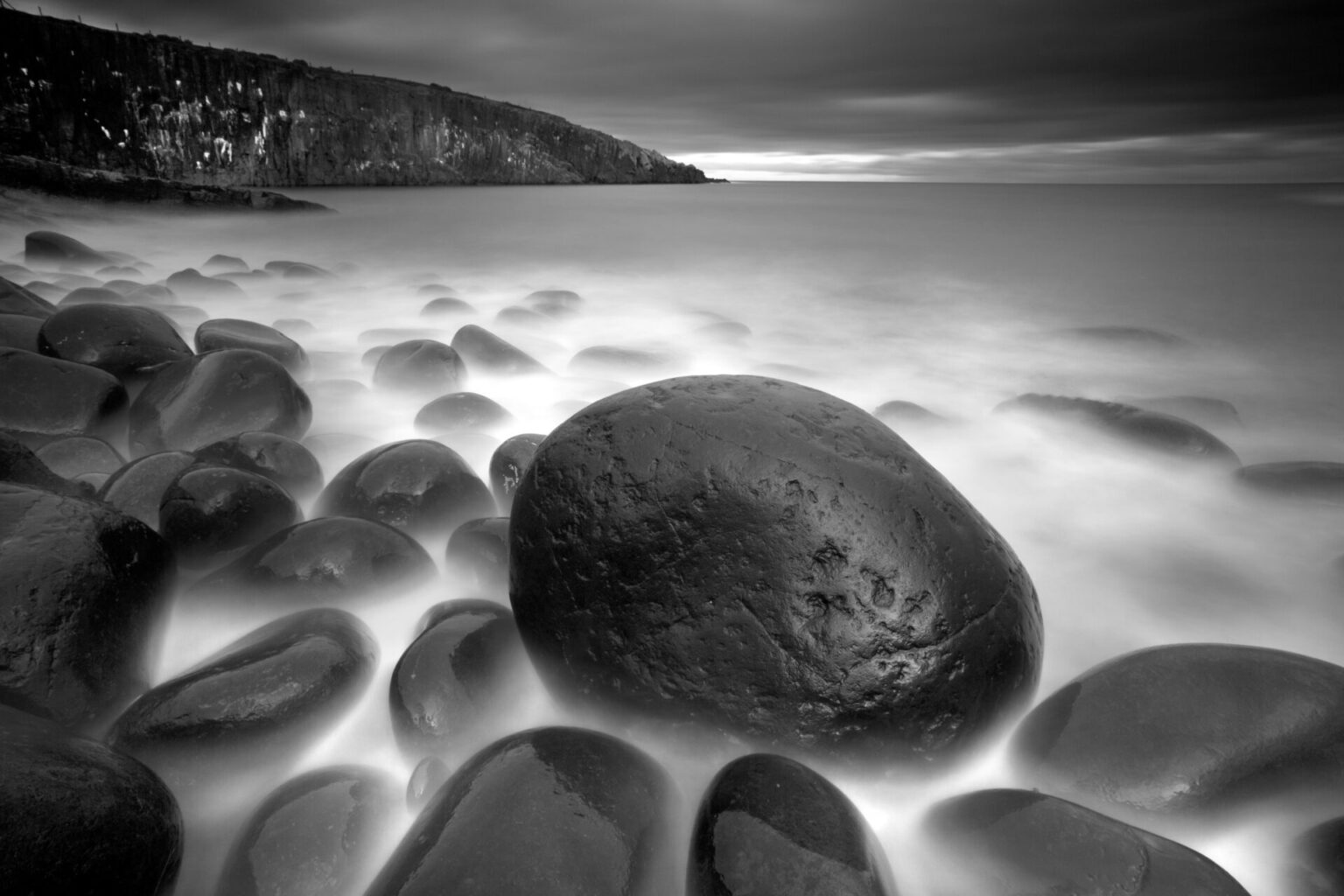We may moan about the weather in the UK, but one great benefit of high rainfall levels is that water is an integral part of the landscape, adding interest to our compositions and acting as a versatile subject in its own right.
The Lake District is one of the most naturally beautiful regions in England, and a popular haunt for photographers. However, it can only boast so many lakes, tarns, rivers and waterfalls because it also happens to be the wettest region, so it’s no surprise that if you head there for a few days there’s a high probability that it may rain at some point.
It’s the same in Scotland. The Isle of Skye is an amazing place renowned for its rugged, wild beauty, but as it’s covered in high mountains, it’s also a magnet for cloud and precipitation, and I’ve heard numerous stories from photographers who reckon that in a whole week it only stopped raining for a few hours. That’s desperate, and I reckon even I would be suffering from cabin fever after more than a couple of days. However, just as fitness fanatics say there’s no gain without pain, for creative photographers, there’s no gain without rain.
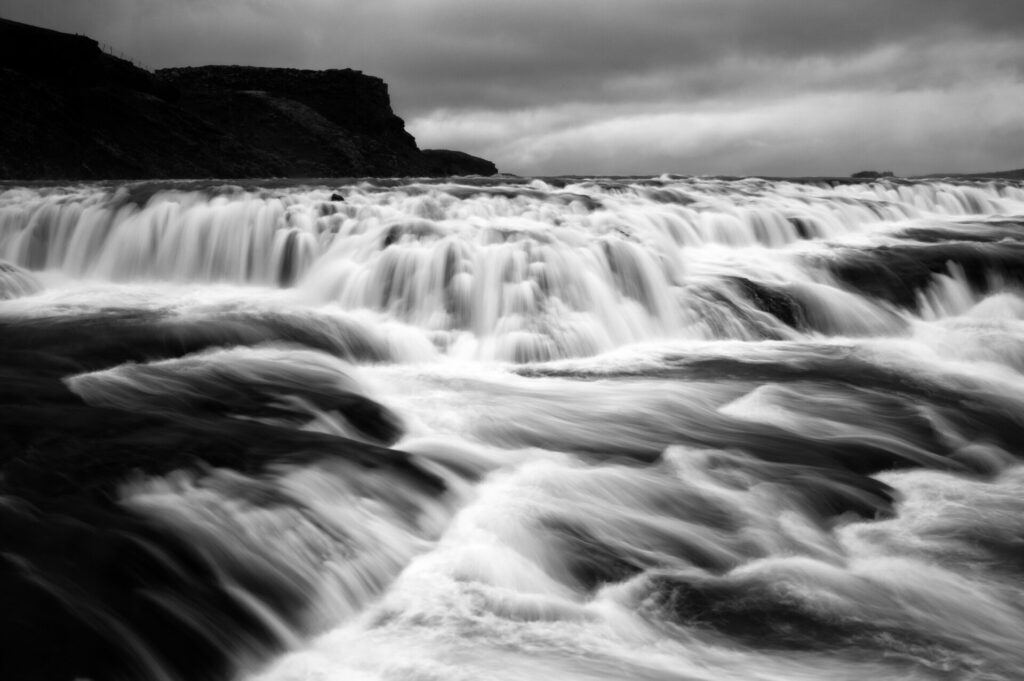
Go with the flow
From rivers, streams and waterfalls to fountains and falling rain, water is all around us in so many forms. The effect you get is all down to how fast the water is flowing and the shutter speed you use to shoot it. If you want to record a sense of natural motion where there’s some blurring in the water but you can still detect plenty of texture, you won’t need to keep the shutter open for very long – for a waterfall 1/15sec or 1/8sec; for a river or sea 1/4sec or 1/2sec.
If you want that gaseous milky effect that so many love, you need to slow the speed right down. For gentle waterfalls, try a shutter speed of 1 to 10 seconds. For bigger waterfalls or any waterfall after heavy rain, 1/2sec to 2 seconds should do the trick. The key is to keep slowing the shutter speed down until areas of the waterfall start to blow out (overexpose). Once that starts to happen, you know you’ve gone as slow as you can.
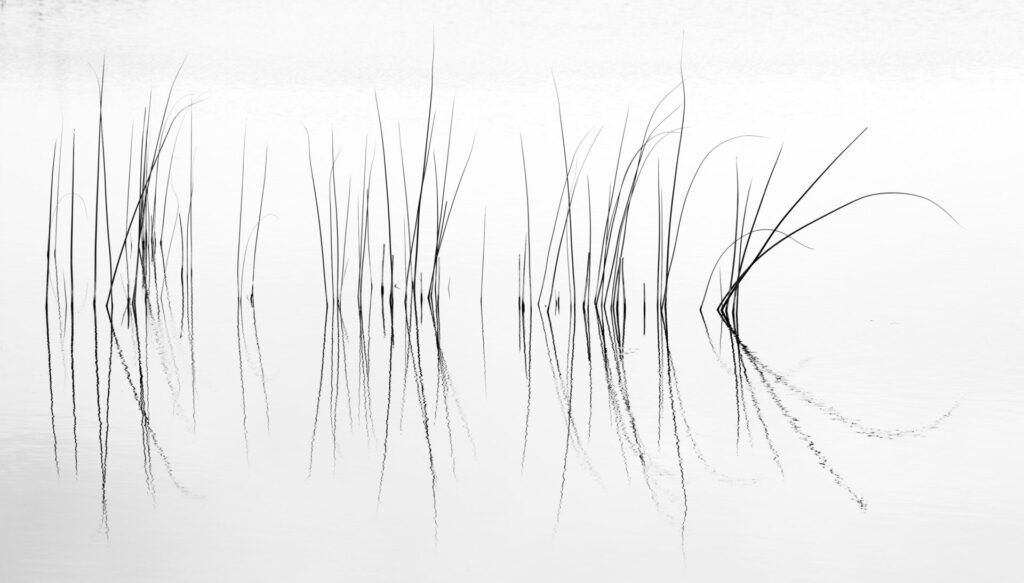
On reflection
Reflections are a great subject to look for in rivers, lakes, harbours, puddles and anywhere else where you find water. For the best results, shoot in sunny weather and keep the sun behind or to the side of the camera. Calm weather will reward you with crisp reflections full of detail, while the slightest breeze will ruffle the surface of the water to produce colourful abstracts. Both can work well.
Use a wideangle lens to fill the foreground with reflections, or a telezoom to home in on a smaller area. Whether you include anything else in your shot is down to personal preference. The bow of an old fishing boat can make an interesting contrast to its reflection, but don’t feel you have to include it – the reflection alone may make a better shot, especially if you’re going for a more abstract effect. Either way, always focus on the reflection itself so you’re sure it will come out in sharp focus.
A polariser can serve two opposing purposes when photographing reflections. On the one hand, it can remove the hazy glare you often see on the surface of calm water so the reflections in it are enhanced. On the other, it can eliminate reflections completely, so use with caution.
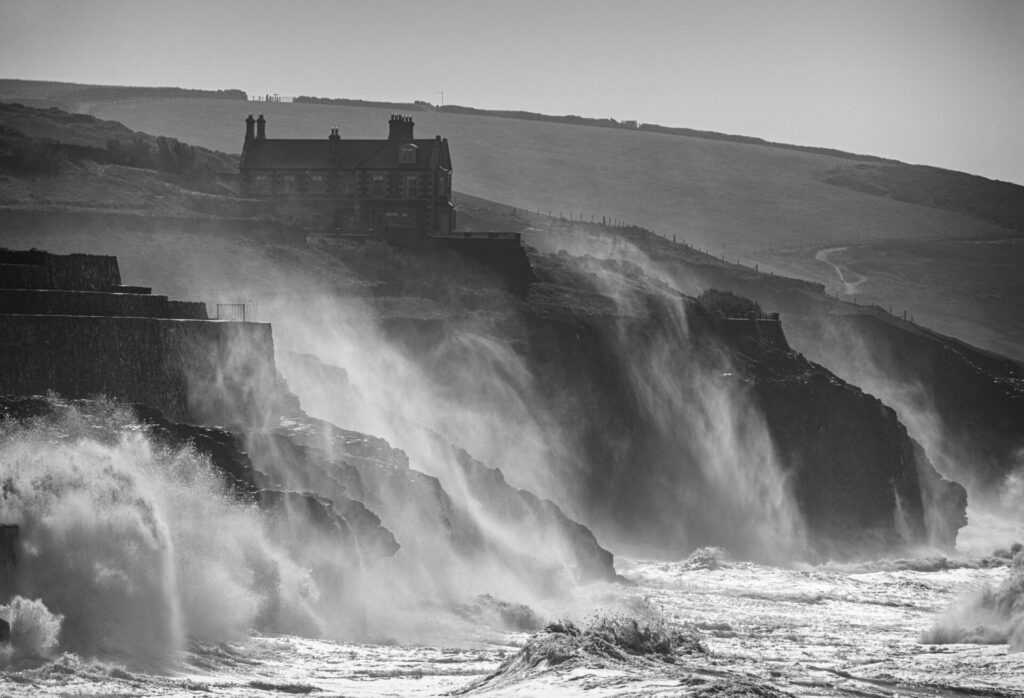
All at sea
The sea is a different animal, as its motion varies so much depending on the weather, tide and location. If you want to freeze crashing waves, you’ll need a shutter speed of at least 1/250sec, preferably faster. Dialling in +1 stop or so of exposure compensation should remedy any problems with underexposure.
To record waves with just a little blur, try 1/4sec or 1/2sec and trip the shutter as they explode against the shore. To capture the motion of the sea washing over rocks use exposures of 2 to 10 seconds. If you want the sea to record as a delicate mist, which can look amazing at dawn and dusk, you’ll need to keep the shutter open for 30 seconds or more. Try different shutter speeds in different situations and eventually you’ll get a feel for what works and when.
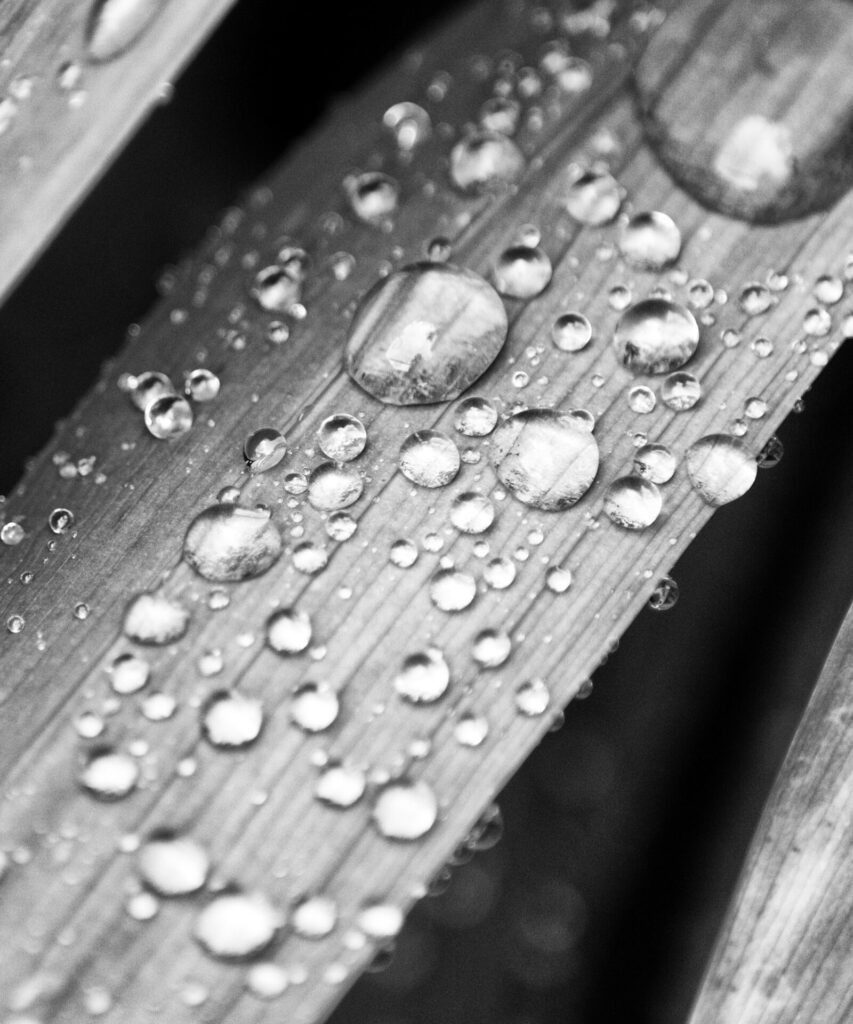
Move in close
Water droplets make fascinating patterns if you move in close and fill the frame. After a shower, head outside with your camera and look for raindrops. Your car will be covered in them and so will every leaf, flower and blade of grass in your garden. Water droplets created by rainfall or condensation also gather on windows, which you can then backlight to reveal interesting patterns.
If you can’t find watery patterns, create your own by spraying water on to a suitable surface using a plant mister. As well as patterns of droplets, also look for a single drop of water dangling precariously from the end of a leaf or petal.
If you want to get in really close, a macro lens will be required. Alternatively, fit extension tubes or cheaper supplementary close-up lenses to a standard 50mm lens or standard zoom so you can focus down to just a few centimetres.
For more of Lee’s top tips on photographing water, including how to protect your gear against the elements, pick up a copy of B+W 306.

